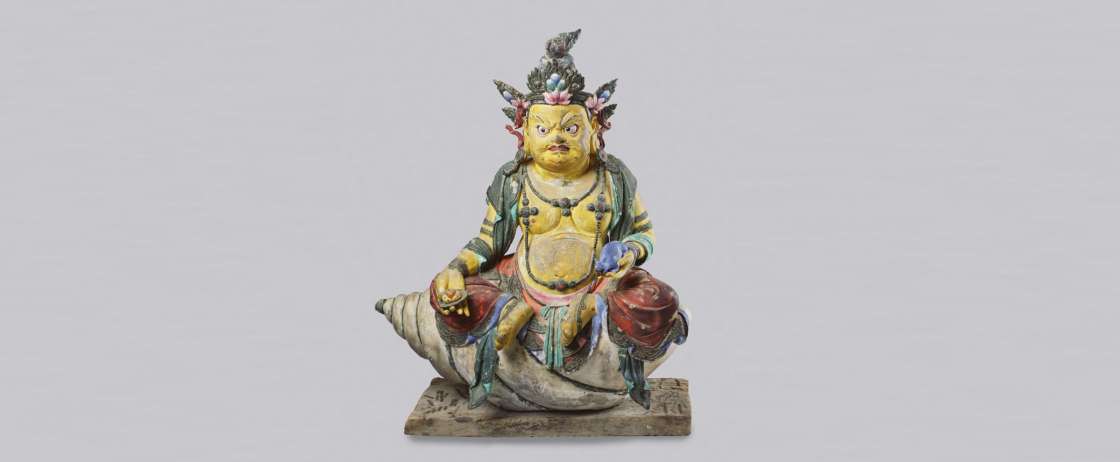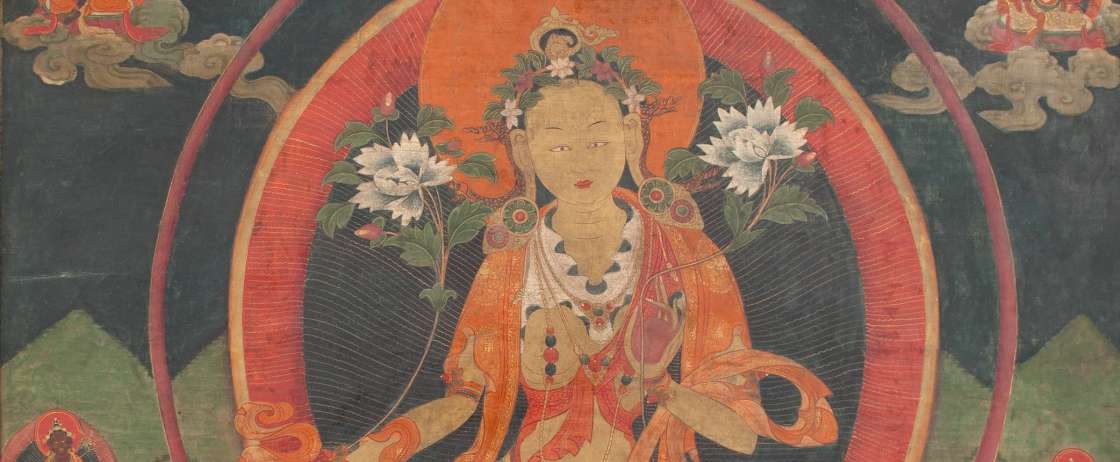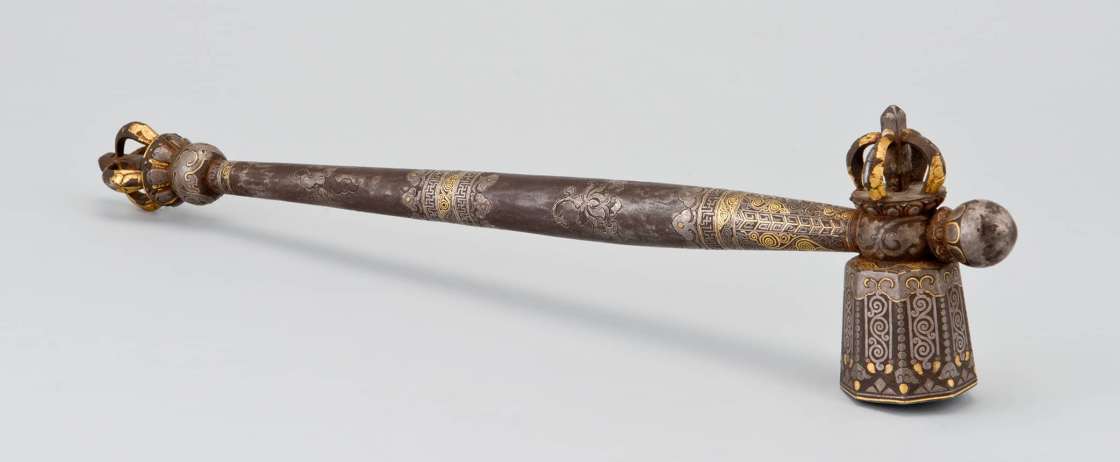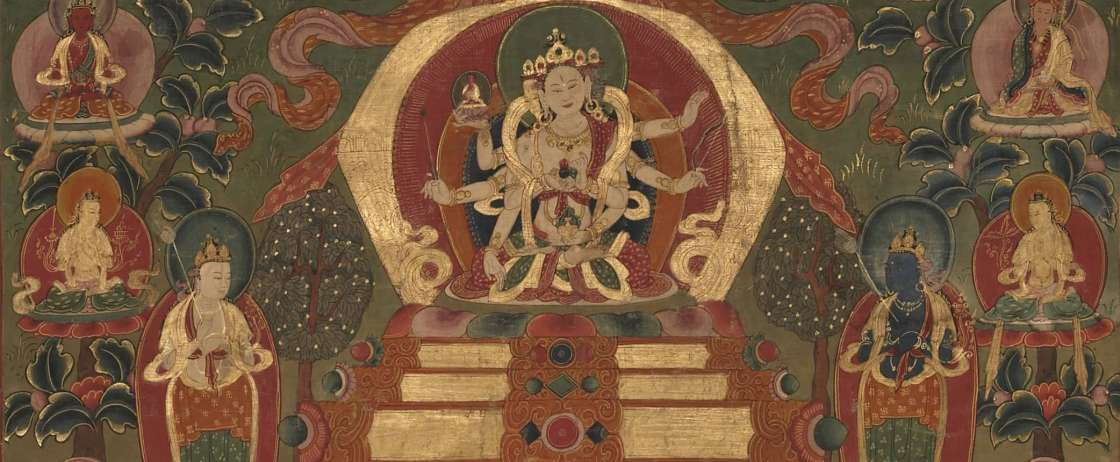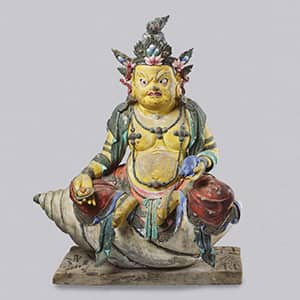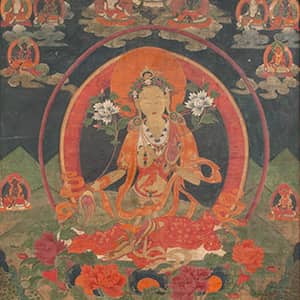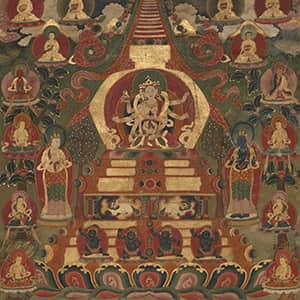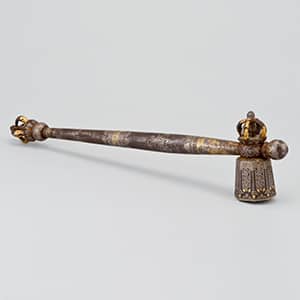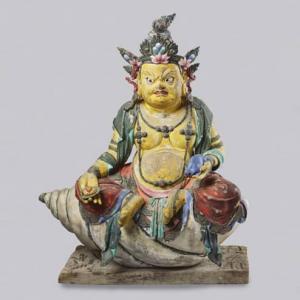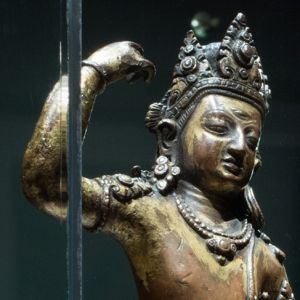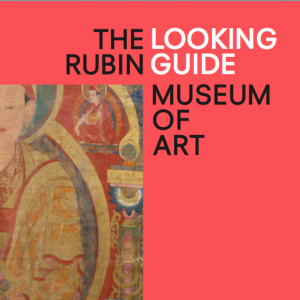
Gateway to Himalayan Art introduces you to the main forms, concepts, meanings, and traditions of Himalayan art represented in the Rubin Museum collection.
The exhibition opens with a large map that highlights regions of the diverse Himalayan cultural sphere, including parts of present-day India, China, Nepal, Bhutan, and Mongolia. Gateway invites you to explore exemplary objects from the Museum’s collection, organized and presented in thematic sections: Figures and Symbols, Materials and Techniques, and Purpose and Function.
In addition to sculptures and paintings, objects such as a stupa, prayer wheel, and ritual implements demonstrate how patrons sought the accumulation of merit and hoped for wealth, long life, and spiritual gains, all to be fulfilled through the ritual use of these objects and commissioning works of art.
Among the featured installations are a display that explains the process of Nepalese lost-wax metal casting and a presentation of the stages of Tibetan hanging scroll painting (thangka). You will also encounter life-size reproductions of murals from Tibet’s Lukhang Temple, photographed by Thomas Laird and Clint Clemens.
Gateway to Himalayan Art was the model for a traveling exhibition that, along with a digital platform and publication, is part of Project Himalayan Art—an integrated initiative that presents a sweeping introduction to Himalayan art. Learn more.
Curated by Elena Pakhoutova
Leadership support of the Rubin Museum is provided by Bob and Lois Baylis, Barbara Bowman, Dalio Philanthropies, Fred Eychaner, Christopher J. Fussner, Agnes Gund, Rasika and Girish Reddy, and Shelley and Donald Rubin.
Lead support for the Rubin Museum is provided by the Milton and Sally Avery Arts Foundation, Bob and Lois Baylis, Barbara Bowman, E. Rhodes and Leona B. Carpenter Foundation, Noah P. Dorsky, Fred Eychaner, Christopher J. Fussner, Agnes Gund, The Robert H. N. Ho Family Foundation Global, Henry Luce Foundation, The Pierre and Tana Matisse Foundation, Mellon Foundation, Matt and Ann Nimetz, The Randleigh Foundation Trust, Shelley and Donald Rubin, Tiger Baron Foundation, and Ellen Bayard Weedon Foundation.
General operating support of the Rubin Museum of Art is provided by Daphne Hoch Cunningham and John Cunningham, Anne E. Delaney, Dalio Philanthropies, Janet Gardner, the Estate of Lisina M. Hoch, Dan Gimbel of NEPC, Inc., Gerry Ohrstrom, The Prospect Hill Foundation, Basha Rubin and Scott Grinsell, Namita and Arun Saraf, Linda Schejola, Eric and Alexandra Schoenberg, Eileen Caulfield Schwab, Jesse Smith and Annice Kenan, Tsherin Sherpa, Tong-Tong Zhu and Jianing Liu, with generous donations from the Museum’s Board of Trustees, individual donors and members, and corporate and foundation supporters.
This program is supported, in part, by public funds from the New York City Department of Cultural Affairs, in partnership with the City Council.
The Rubin Museum’s programs are made possible by the New York State Council on the Arts with the support of the Office of Governor Kathy Hochcul and the New York State Legislature.


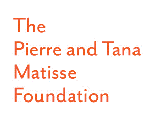




Plan your visit
Send Your Comments
Comments are moderated, and will not appear on this site until the Rubin has approved them.

